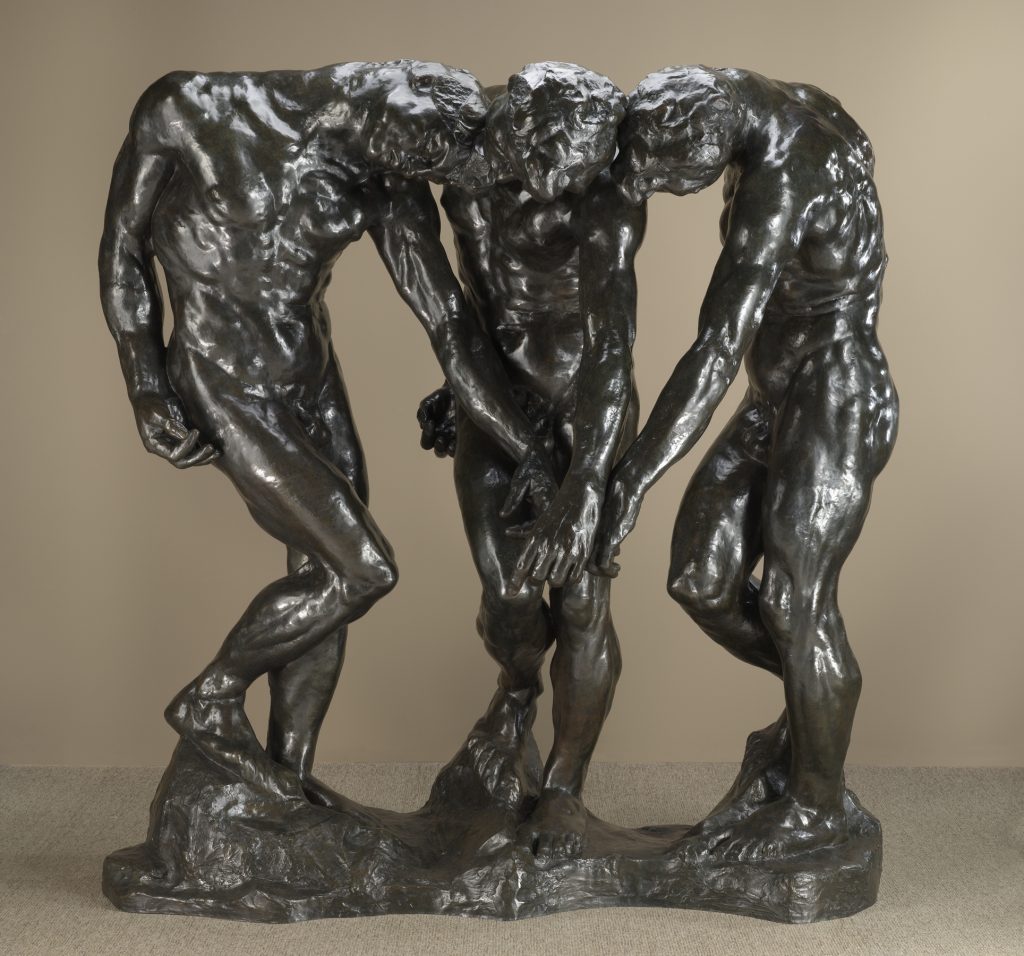The Three Shades (work of art)
Artwork Info
About
In the Inferno Dante describes three shades, souls of his departed countrymen, who danced in a circle as they told of their woeful state in Hades. Rodin’s The Three Shades stood upon the uppermost lintel of The Gates of Hell, crowning the tympanum just above The Thinker. The downward thrust of their left arms and their heads conveys despair as they summon the viewer to gaze upon the tumultuous drama of sin and damnation unfolding below them on The Gates.
The most remarkable aspect of the work is that the three figures—even their pedestals—are identical, seen from the left, straight on, and from the right. The three figures radiate from a single point where their left arms converge, like spokes on a wheel. Dante wrote, “They all three made of themselves a wheel.” Rodin’s decision to use three identical figures may have its origins in Dante’s text. Canto III of the Inferno opens with the words Dante and Virgil read inscribed on the summit of the gateway leading to hell: ”Through me is the way into the doleful city / Through me is the way into eternal suffering / Through me is the way that runs among the lost.” Rodin’s triplicate figures echo the triplicate repetition in Dante’s lines. In the original plan of The Gates of Hell, the Shades pointed downward to an inscription—the one on Dante’s infernal gateway: “Abandon all hope, ye who enter here.”
tags: place, variation, allusion, artist’s process, literature

